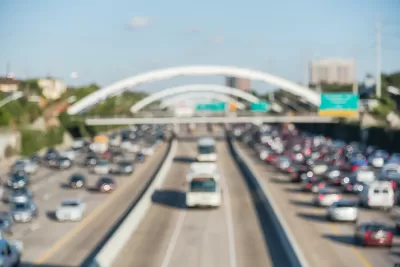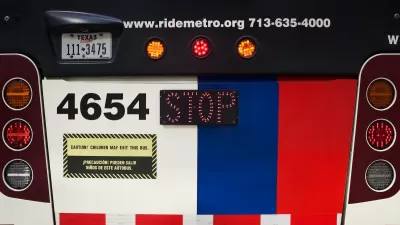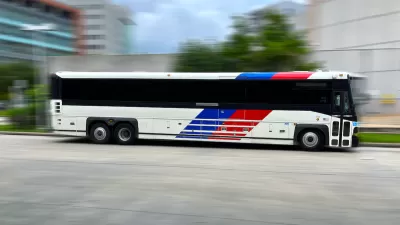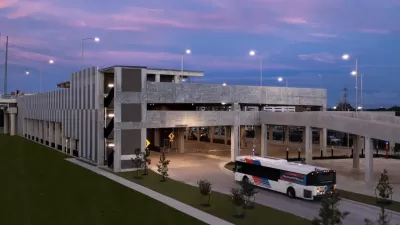The city's transit agency hopes a more comprehensive and connected rapid transit network will encourage more Houstonians to use buses.

Despite a lackluster performance from the recently opened Silver Line, which, as Houston's first bus rapid transit (BRT) line, "limps along with an average of fewer than 700 passengers on weekdays this year," Houston Metro is moving forward with more BRT projects that officials hope will connect more parts of the city. "As the region’s core becomes more dense with homes and offices, officials believe large buses shuttling between set stops are expected to connect core commuting areas to park and ride hubs, making transit more convenient for suburban and inner-loop residents simultaneously," reports Dug Begley for the Houston Chronicle.
"The preferred I-10 route plan also details how Metro plans to use its existing stations and lanes along Capitol and Rusk so those platforms can pull double-duty while closing them to other vehicles. Left unresolved is how buses will make the move from I-10 to downtown streets, which will depend on the final plans for a massive rebuild of the central city freeway system and Interstate 45."
"Crucially, the project also links more neighborhoods and amenities to rapid service, along I-10 where officials plan stations at Studemont, Shepherd-Durham and Memorial Park." As Begley writes, "The busway, a two-lane elevated road right next to the freeway, would allow buses to move from the Northwest Transit Center near Loop 610 and I-10 to the central business district without being stuck in traffic."
See Begley's article, linked below, for details on the project's proposed route and options for the future of Houston's rapid bus lines.
FULL STORY: Metro to bridge rapid transit between Uptown, downtown Houston along I-10 route

Planetizen Federal Action Tracker
A weekly monitor of how Trump’s orders and actions are impacting planners and planning in America.

Maui's Vacation Rental Debate Turns Ugly
Verbal attacks, misinformation campaigns and fistfights plague a high-stakes debate to convert thousands of vacation rentals into long-term housing.

San Francisco Suspends Traffic Calming Amidst Record Deaths
Citing “a challenging fiscal landscape,” the city will cease the program on the heels of 42 traffic deaths, including 24 pedestrians.

Amtrak Rolls Out New Orleans to Alabama “Mardi Gras” Train
The new service will operate morning and evening departures between Mobile and New Orleans.

The Subversive Car-Free Guide to Trump's Great American Road Trip
Car-free ways to access Chicagoland’s best tourist attractions.

San Antonio and Austin are Fusing Into one Massive Megaregion
The region spanning the two central Texas cities is growing fast, posing challenges for local infrastructure and water supplies.
Urban Design for Planners 1: Software Tools
This six-course series explores essential urban design concepts using open source software and equips planners with the tools they need to participate fully in the urban design process.
Planning for Universal Design
Learn the tools for implementing Universal Design in planning regulations.
Heyer Gruel & Associates PA
JM Goldson LLC
Custer County Colorado
City of Camden Redevelopment Agency
City of Astoria
Transportation Research & Education Center (TREC) at Portland State University
Jefferson Parish Government
Camden Redevelopment Agency
City of Claremont





























